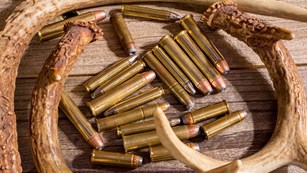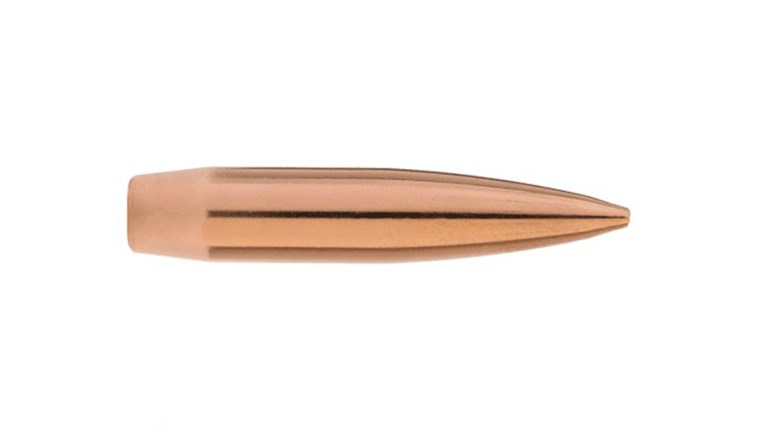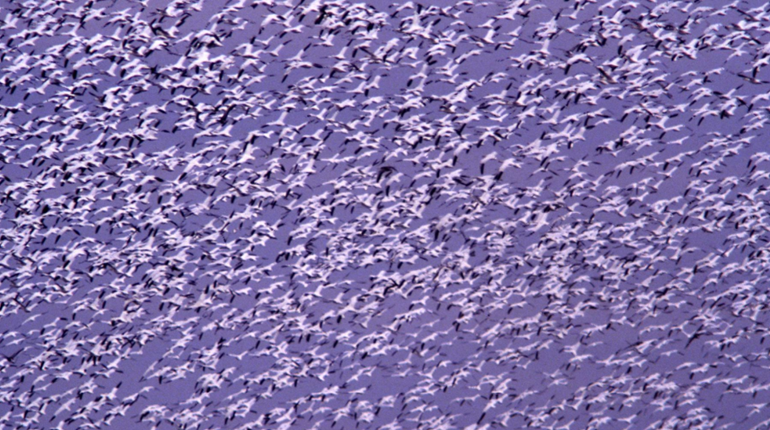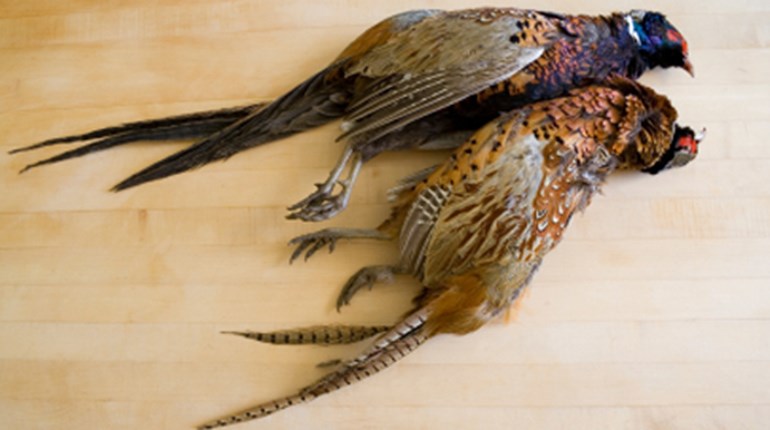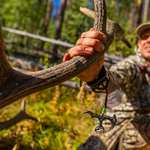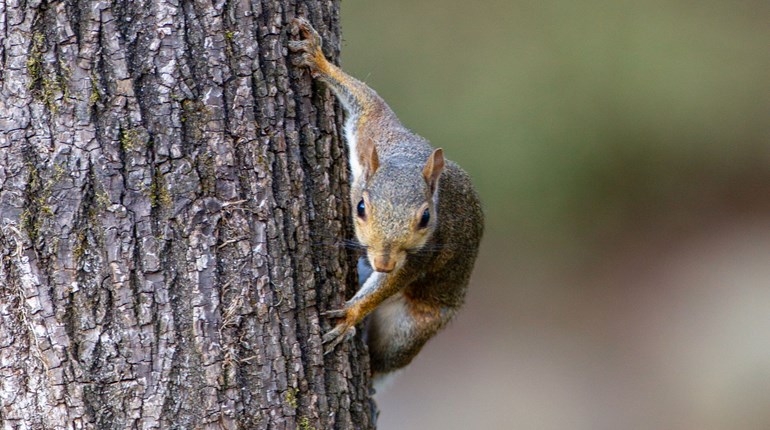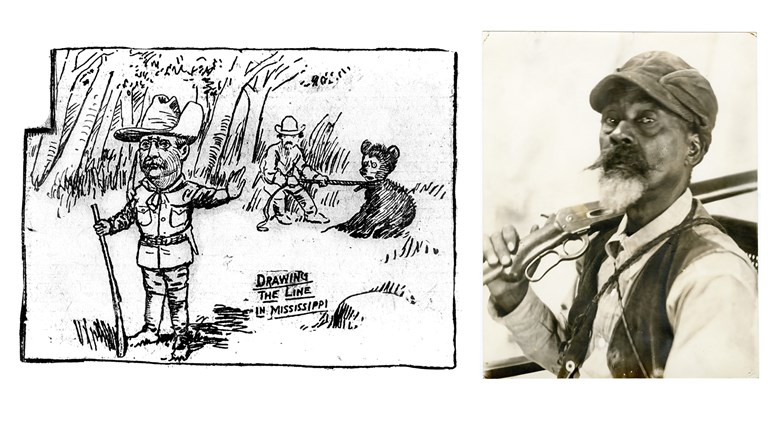
About the fourth time Gary Litle swung his truck’s headlights in a giant circle, cutting through the gloom over the middle of a huge wheat field, it became painfully obvious there wasn’t much cover in which to hide our blinds. The stubble was sparse and about 8 inches high, with no tumbleweeds, low spots or uncut wheat in sight. The best cover we could locate was a small, 5-foot-wide strip of stubble perhaps a foot high. Unfortunately, this was our only option where Gary had seen the geese feeding heavily the previous night. This was the “X,” and this was where we were going to set up.
Shortly after first light, flocks started lifting off the roost and heading our way. I glanced over at Gary then tried to flatten myself further into the dirt upon seeing how much he stood out, despite our best efforts to strategically place decoys around us. No doubt he thought the same looking at me. To make matters worse, the prevailing wind forced us to face directly away from the roost, meaning the geese would fly directly over us before they could turn into the wind and drop low enough to shoot—yet more opportunity to spot us.
Surprisingly, the first flock flew over at 60 yards and never veered off course until about 100 yards downwind, whereupon the geese banked hard and locked up, gliding right at us. Under all those watchful eyes, I was feeling positively exposed, but hey, maybe they were more focused on our widely scattered spread. No such luck, it turned out. At about 60 yards they sounded the alarm and backpedaled as fast as they could. Ditto the next eight flocks no matter what measures Gary and I took to fix our hides. Soon it was time to abandon ship before the flight thinned out. Pointing to an irrigation ditch about 150 yards downwind, Gary opted to hide there and hope for some pass-shooting. I decided first to fold up the blinds and place a few decoys on top to minimize our human imprint then move to the ditch. This was my first hunt with Avian-X’s honker decoys, and I wanted to see if the heavy overcast could be a factor since my decoys weren’t fully flocked.
The next dozen flocks did the same as the previous ones: They flew straight over the spread, cupped up and made a sharp U-turn then flared violently. The difference, this time, was that when the birds flew past me on the way to another field, I was able to call one or two geese out of a flock here and there and bring them within 25 yards. They clearly weren’t suspicious of field edges despite heavy hunting pressure here, and in no time I had my four geese.
Out of curiosity Gary and I decided to remove our blinds and bags from the spread to see if that made any difference. Five minutes later a small flock flew over and dropped into the decoys without hesitation then another did the same. The decoys were fine. Amazingly, the folded blinds and shell bags were the culprits. Even covered with decoys, their unnatural rectangular shape gave them away. It was an eye-opening experience that once again proved that even with the best decoys set up on the “X,” if you’re not well hidden you’re doomed to failure. Here are five ways to reduce your human imprint and hide from prying eyes.
Special Attention for Blinds
Certain types of fields are exceedingly easy to hide in, like harvested corn with lots of cut stalks. But low-cut and uniform-colored fields, like wheat, barley and grazed-down pastures, pose huge challenges. If you look like a lump that casts an unnatural shadow, or a color that doesn’t match the field, you’re going to stand out.
Fact is, geese have caught on to layout blinds. They’ve learned to steer clear of rectangular shapes and straight lines and shadows, and they know evenly spaced mounds in a spread mean danger. That’s why it’s critical to spend lots of time stubbling or brushing up your blinds. If they don’t blend in perfectly, their geometric shape will give you away. And don’t rely on your blind’s camo pattern alone, because flat surfaces will reflect more light than irregular three-dimensional ones—another reason you should mud up your blind at least once a year. To augment natural vegetation that might be scarce, zip-tie bunches of raffia or use Avery’s KillerWeed blind kits. With a little spraypaint, they can match any cover you want. If you keep a stash of different-colored material, you’ll never be unprepared.
Hunting from low-profile blinds, or simply lying on the ground dressed in the properly colored ghillie or leaf-o-flage suit, can also make a huge difference. Simply put, the higher off the ground you are, the more you’re going to stand out. For low profiles, Final Approach’s X-Land’r, Avery’s PowerHunter and Sillosock Decoy’s Back Pack Ghillie blinds are excellent choices. This year Hardcore Brands has come out with the super-low-profile Run ’N Gunner blind that really lets you hide in short cover. To further reduce the height of your blinds, dig shallow holes whenever a farmer gives you permission.
If They’re Flaring, Fix the Problem
When geese and ducks flare, they’re seeing you or something glaringly wrong. And if one flock spooks, others will too, so don’t expect your luck to change by itself. Get out of your blind right away and try to figure out what they’re seeing on their approach. Maybe some decoys have blown over. Spent shells might be shining. More likely, though, your blinds aren’t hidden well enough or someone’s face or gun is shining. It sounds obvious, but if you can spot your blinds, so will the birds.
If you and your buddies are spread out, try setting blinds tight against each other, then piling on lots of vegetation to fill in shadow-forming gaps, which will get rid of the geometric layout-blind look and limit where in the spread birds might spot you. In one wheat field last year that tactic saved the morning. When hunting with lots of guys, take turns rotating in and out of fewer blinds. Or rearrange decoys around each blind to break up their outlines and shadows. If it’s windy, try stacking more decoys immediately downwind of the blinds; birds approaching from downwind will be lower to the ground, and the extra decoys will obscure their view.
But sometimes there’s simply not enough cover, and nothing you do out in the field will work. Before the flight ends, your best bet for salvaging a hunt might be to pick up and move your rig wherever there is sufficient cover. At some point you’ll have nothing to lose.
Take Attention Off You
Using decoys to hide blinds can backfire when you place so many around the blinds they form a dark line that’s significantly denser than the rest of the spread. Not only will that dark area attract the birds’ attention, and hence to your blinds, by mid-season they’ll have seen similar setups enough times to know to avoid them. Sometimes simply trying to hide won’t suffice; you have to intentionally get birds to look away from your blinds.
If you have enough cover, try hiding completely out of the decoys. The birds will then be focused entirely away from you. This setup is particularly effective on calm days when the birds can come in high from any direction and really study your spread. It also means you’ve got to call less, letting the decoys do most of the work when birds are in close.
Setting your spread so the birds land crosswind to you is another way to ensure they are facing away from the blind. So is using as few decoys as possible to hide blinds, then concentrating the majority of your spread farther away to form a black blob of decoys that says “here’s the feed.” It’s particularly effective when you need to be out in a field but there’s not a lot of cover. Like hiding outside the spread, however, this setup relies on sparse calling and no flagging when birds are within 60 to 80 yards.
Finally, if you can find one, Wing Wavers decoys with jerk-cord-operated flapping wings are excellent for adding motion to spreads and attracting the attention of geese away from your blind. On one limit hunt I had recently, I mentioned to my hunting partner that the Wing Waver really made our hunt. He agreed then added, “But all the geese wanted to land around it, not on top of us.” Enough said.
Know When to Forget the “X”
When you see tons of birds bombing into a field, it’s certainly confidence-building to set up exactly where they were feeding. But if the “X” is in a spot where you can’t find enough cover to adequately hide, then hunting there makes no sense. Instead, start looking in the direction of the roost. Try to get under the flight path going to the “X” where you can hide—even if that means setting up a half-mile away or more. Hunters can get so focused on setting up exactly where they saw birds feeding the night before they forget about the No. 1 factor for success: being well hidden.
Sometimes being different from other hunters in your area is as important to success as good calling and realistic decoys. In an area my friends and I frequently hunt, lots of hunters set up along field edges, which is why we’ve resisted doing the same and usually hunt out in the fields. At the same time, they tend to bunch their decoys in a big blob tight to the edge.
This season we decided to hunt field edges and shadows of irrigation ditches because cover was scarce out in the fields and the geese were wise to our blinds. Instead of crowding the decoys right in front, we set them in family groups and strung them up to 60 yards wide but no more than 30 yards into the field. We relied on calling and a slightly greater concentration of decoys in front of us to bring the honkers within range. And if we had the option, we chose a fencerow or ditch where the geese would land parallel to it, not toward it. All this made our spreads look more appealing and different from the other hunters’, and it worked like a charm most days. In your area most hunters probably hunt out of layout blinds in the middle of fields, in which case hunting field edges can be an easy way to hide and offer a new look to hunter-weary birds.
Other Considerations
Calling and flagging at the wrong times can help geese and ducks pinpoint your hides. As a general rule, the closer the birds are, the less noise and movement you should make; and the less you’re hidden, the greater this rule applies. If birds are circling, don’t flag or call when they’re facing you. Wait until they’re quartering away.
Finally, not all camo is equal, and what works well in the whitetail woods usually will stick out like a sore thumb in a stubble field. Camouflage that’s darker than your surroundings will appear black from farther away, so if you’re intent on hiding from prying eyes, wear camo that really blends in well with the surroundings. While you’re at it, make sure your face and hands are covered and your gun barrel or sunglasses aren’t glaring in the sun. Given all the time and effort you’ve invested in each hunt, it’s a shame to let one seemingly minor oversight kill your chance of success.






